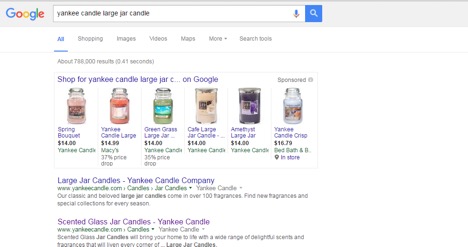Over the years, CommerceHub has tested a variety of different product title alterations in hopes of finding the perfect title. Did we? Yes, and no. The fact of the matter is, it depends. There are numerous combinations of how a title can be structured and crafted based on the product and its attributes. What we’ve found is that how you structure your title will vary based on:
- Strength of your brand
- If you’re the manufacturer or not
- The product category
- Search volume
You only have 70 characters, so you want to use them wisely. How do you do that, you ask?
To Brand Or Not To Brand?
Should brand be included in the product title? The short answer is yes, but where it should be included in the product title depends. If you are the manufacturer of the product you still want to include the brand name in the title, but it might differ where you place it. As a rule of thumb, “Brand + Gender + Product Type + Attributes (Color, Size, Material)” is the ideal structure for Google Shopping product titles for the apparel, consumable, and hard goods categories. If you are a manufacturer, however, we recommend moving brand from the beginning of the title to the end. As the manufacturer, your brand is already referenced in the seller name on the search engine results page (SERP) under the price, so why waste valuable characters in the beginning of your title?
For example, in the below search, Yankee Candle does not need to add their own brand name to the beginning of their product listing ad, due to their brand name already being listed below the price.
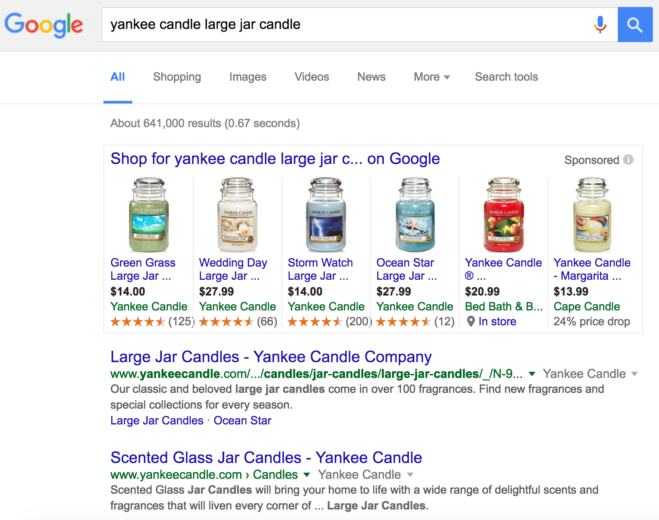
On the other hand, Bed Bath & Beyond front loads their title with the brand name “Yankee Candle” to gain credibility with the searcher that they are selling an authentic product. If you are a reseller of a product like Bed Bath & Beyond’s, it’s important to follow Google’s recommendation and include the brand name at the beginning of the title as it’s an important attribute that consumers are searching
The next question that comes up is whether your brand name is “weak” or “strong”? Google Trends can help you determine whether or not a brand name is “strong” based on search volume over time. This determination will help weigh the importance of the attribute in the structure of your title. The volume of searches on a particular brand name indicates whether the brand is a “strong” brand or not. We have also tested adding a strong brand name to the beginning of the product title and have seen it help increase sales and traffic and decrease cost in some cases.
For products where the brand strength may be “weaker” you may want to reprioritize attributes like colors, patterns, or features that are likely more important to a searcher and instead append brand to the end of the title. For products where the brand strength is “strong,” you want to make sure the brand is highlighted in the front half of the title and visible to searchers.
Gender Matters. Or Does It?
We ran a few experiments on gender in titles in the apparel category. The deep-dive study conducted by our analytics team and designed by our paid search team took a look at whether or not the word “women’s” was needed in product titles for categories that would traditionally only carry women’s products. Did we really need gender or could we drop it and instead fit additional information into the product title? For gender-specific categories, our study found you can generally drop gender in the title.
In our test, we chose categories of products that were generally geared towards women only. Some of the categories chosen were dresses, skirts, and lingerie. To conduct the test, we removed the word “women’s” from the title in half of the products and left the other half unchanged as part of the control group. We then ran the test for 70 days and watched the traffic and performance. The product groups were subject to the same bidding frequency and performance metrics for both control and test. The expectation for the test was that the number of products in the test and control group did not fluctuate during the testing period.
Here’s what we saw.
Products without “women’s” in the title, generated an incremental 5% in revenue per day, relative to what we would have expected these products to generate had the titles not been altered. As a result, we rolled out the application of removing gender from the control group’s product titles as well for those categories.
What Color Is It?
When it comes to color, we as humans tend to get creative. Whether that’s adding a descriptor to a base color like “sunset orange” or making up names for a color combination for branding like “pascal.” We’ve found that replacing a unique color like mustard with the normalized color yellow in a product title works best. Search volume backs up this assumption:
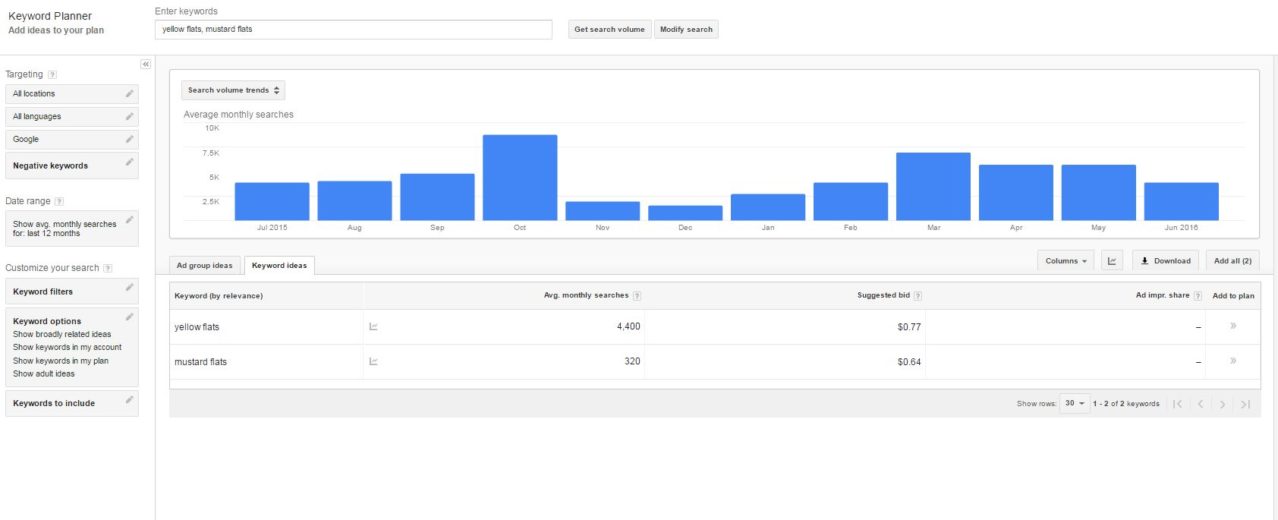
Leveraging the Google Keyword Planner tool allows us to see that consumers are more frequently searching for “yellow flats” over “mustard flats.” The average monthly search volume is more than 10x higher for “yellow flats.”
The good news is, even when a consumer is searching for the shoes in mustard specifically, Google still knows to show your same product. For example, when searching for “seychelles mustard flats” we see the Eager style show even though the flat’s title contains the normalized color yellow.
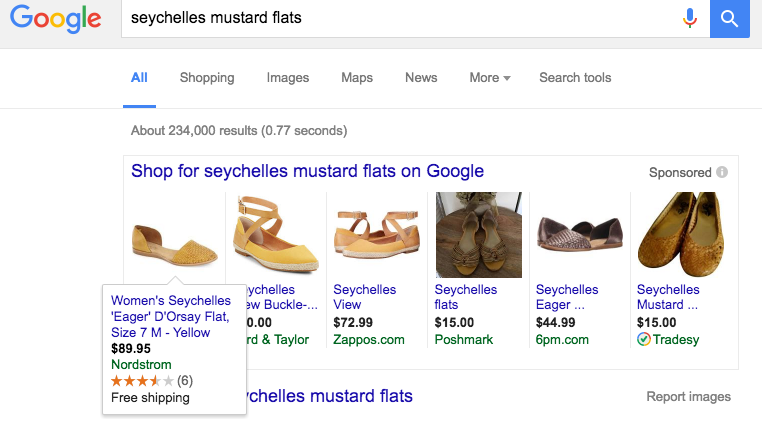
When performing the same search but replacing “mustard” with “yellow” we still see the Eager style show.
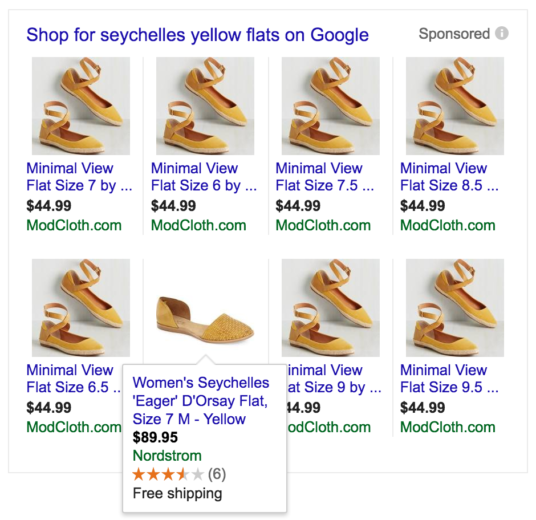
Call It What You Will
Product titles matter. How you structure product titles and what attributes they contain can be key to Google Shopping success. Continuous testing of product titles could make a huge difference to your bottom line, and paying attention to how consumers are searching for your products by analyzing search query data in AdWords can be essential in identifying opportunities for testing.
For more information regarding product titles, make sure to check out our On Demand Webinar – “What’s In A Name? Product Titles and Brands in Google Shopping.”



